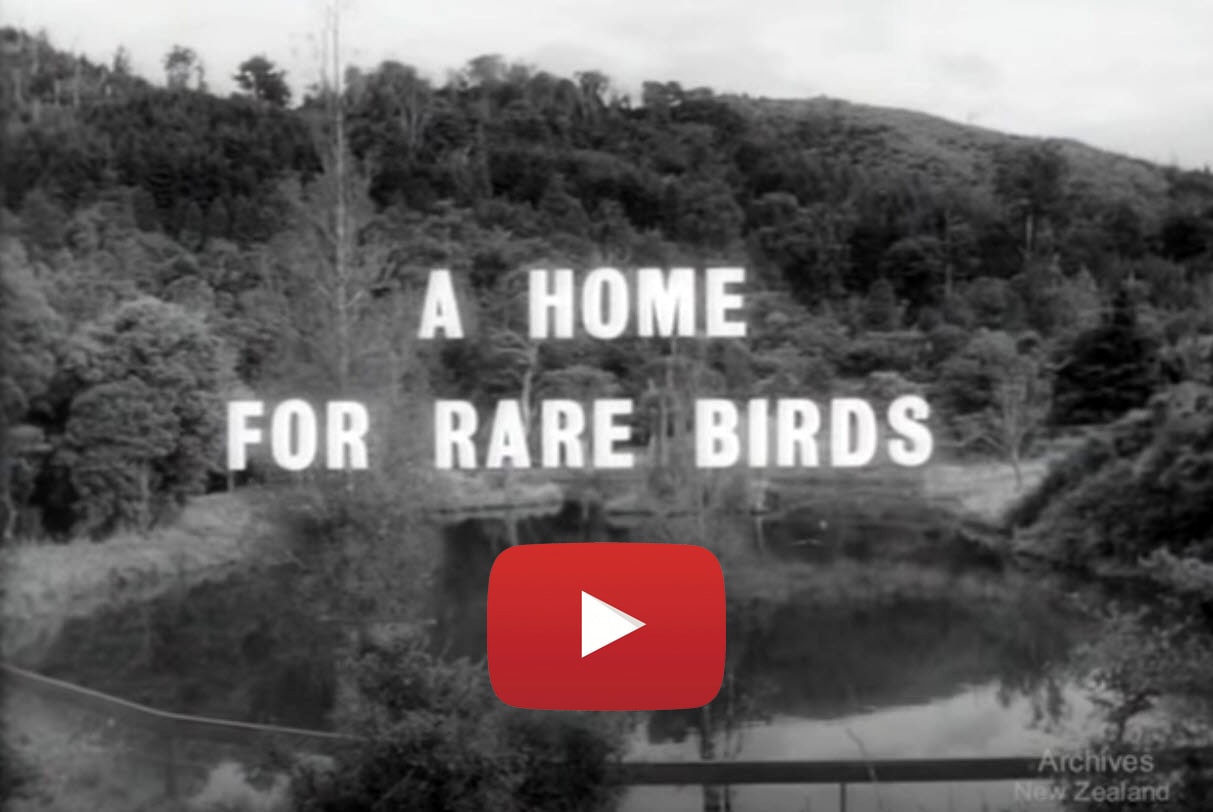History
In 1962, the centre was established to breed and release endangered native birds on these 55 hectares. Takahe (a very rare bird, thought extinct, but rediscovered in Fiordland) were the first species introduced.
In 1982, the visitor centre opened its doors to the public, followed by the Nocturnal House where visitors could see North Island Brown kiwi up close. North Island Kākā were released in 1996, the first successful translocation of the species.
In 2001 the entire forest became part of the wildlife reserve, extending the area from 55 to 942 hectares, increasing capacity to breed birds and diversified species. About 100 km of tracks were cut and thousands of traps and bait stations were scattered, setting up an area for wildlife with low predator pressure.
(Some times are approximate)
20 million years ago
New Zealand inches towards its current position and territory.
Surviving dinosaurs give way to birds, some of them monstrous in size, others tiny but many land bound, evolving into species that had no experience or defence systems against mammalian predators.
Some of them included the adzebill (a ferocious goose-like predator), Haast’s eagle (with a wingspan of 3 metres), the moa (around 3.6 metres high) and poūwa (New Zealand’s only endemic swan); snake and crocodile fossils have also been found.
800 years ago
For the descendants of the Kurahaupō waka that migrated south, the forest is an abundant living pantry of birds, fish, berries and plants, as well as shelter and raw materials for artefacts.
More than 30 generations have walked through the trees you see today at Pukaha, amongst harakeke (New Zealand flax), rewarewa (honeysuckle), mānuka (tea tree) and kowhai.
1907
Last official huia is seen in the Ruahine Range of the central North Island.
1948
The endemic, flightless takahē is rediscovered in Fjordland after being labelled extinct for more than 50 years. Around 500 birds are estimated to be roaming the Murchison Mountains.
1960
Mount Bruce farmer Elwyn Welch and his bantams have successfully raised four takahē chicks on Welch’s Kelvin Grove farm, an incredible feat that drew 16,000 stunned visitors in 1960.
1962
The decision is made to relocate to the Mount Bruce Forest Reserve, a protected site since 1889 and just 2km down the road from Welch’s original farm.
1982
Visitor Centre opens up to the public.
1996
North Island kākā is reintroduced into the forest, followed by the kōkako (thought to have disappeared from Mount Bruce 40 years ago) and then the North Island brown kiwi (absent from the forest for 100 years).
2014
Local iwi Rangitāne o Wairarapa gift their great forest, Whataonga (grandfather of the iwi) back to New Zealand to continue the conservation work of Pukaha National Wildlife Centre.
2019
At present, Pūkaha works directly with Rangitāne as well as the Department of Conservation to protect the taonga that is the forest, hopefully inspiring generations to come.
Historical Footage
Rare early footage from the 1960’s showing the Minister of Internal Affairs, David Seath, opening the reserve to the public for the very first time.
The grounds and landscape might have been added to over the years but the sentiment of our mission still remains relatively unchanged from that quoted in the footage – “to protect from extinction many of New Zealand’s rare native birds”. The one minute and 25 second footage touches on Pūkaha’s early breeding programmes including that of our founding species; the takahē.

